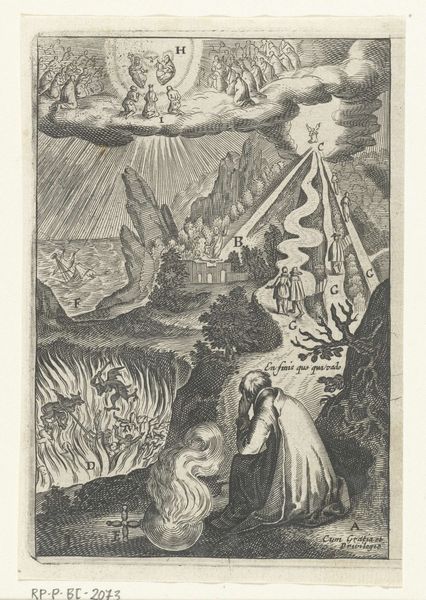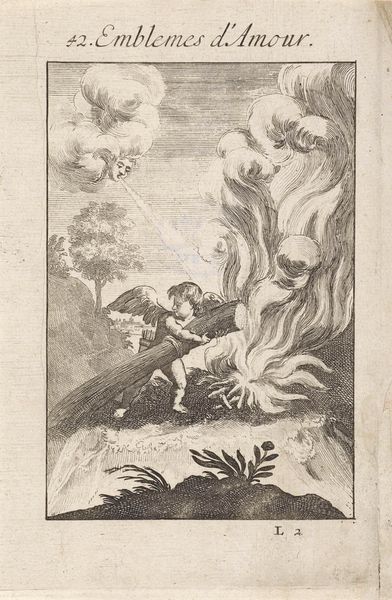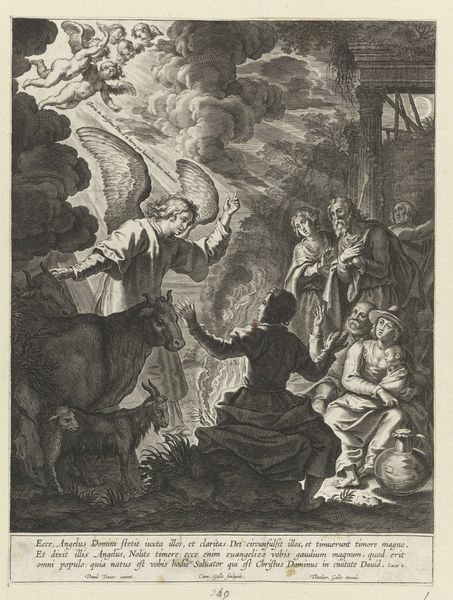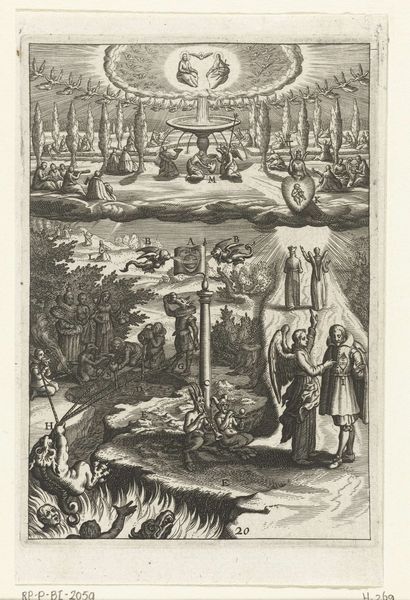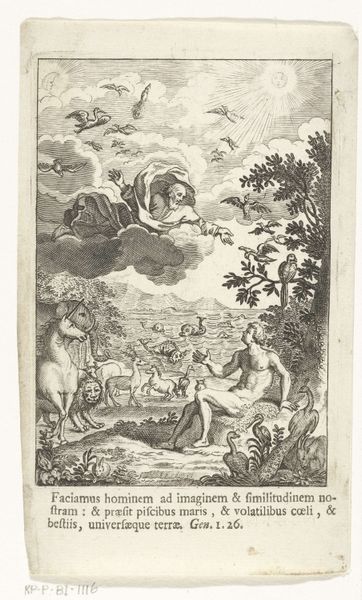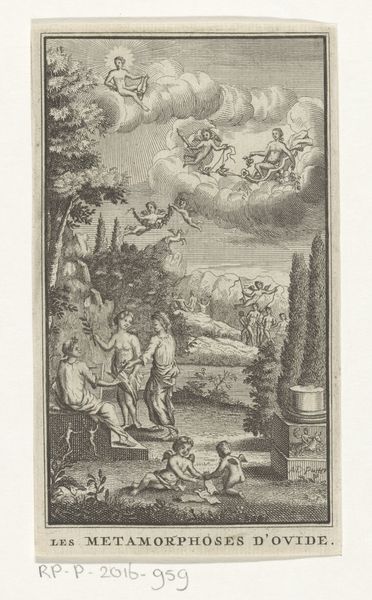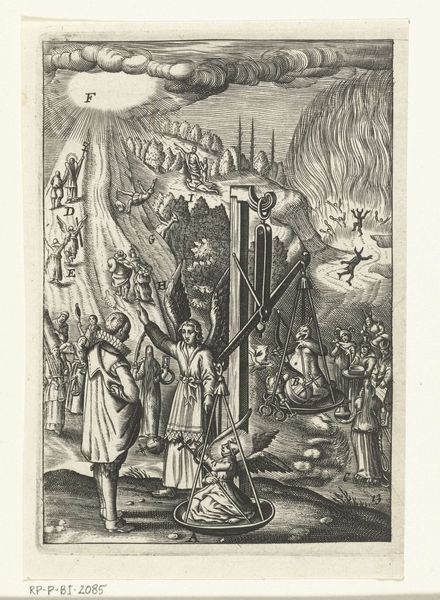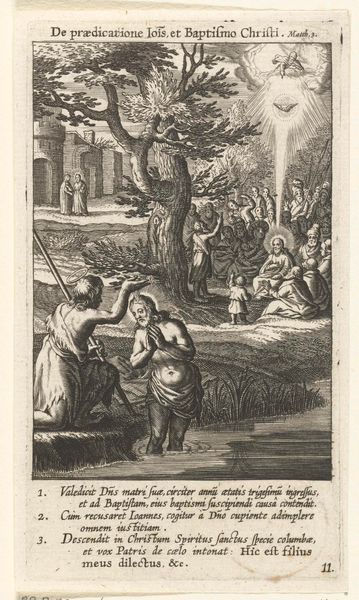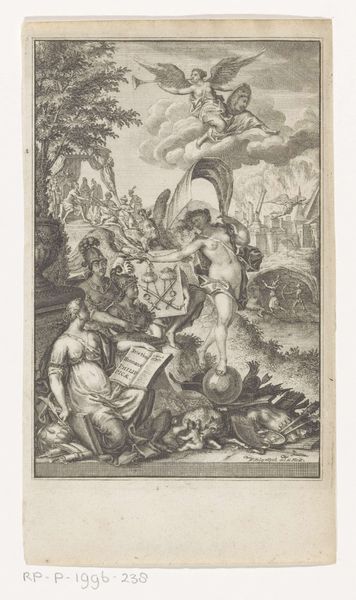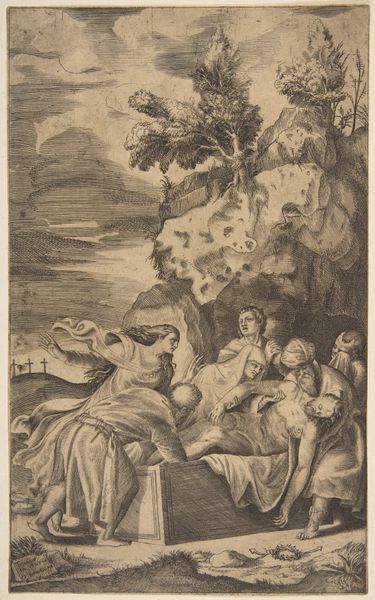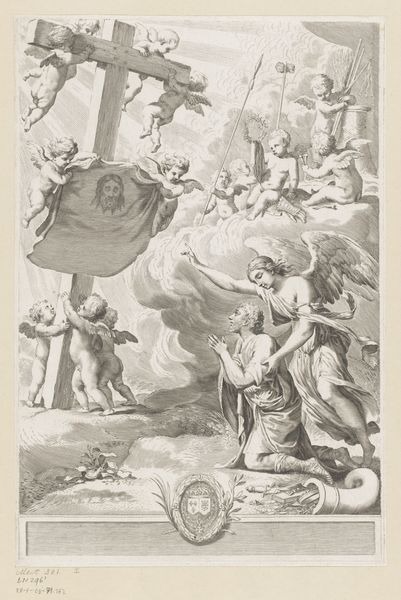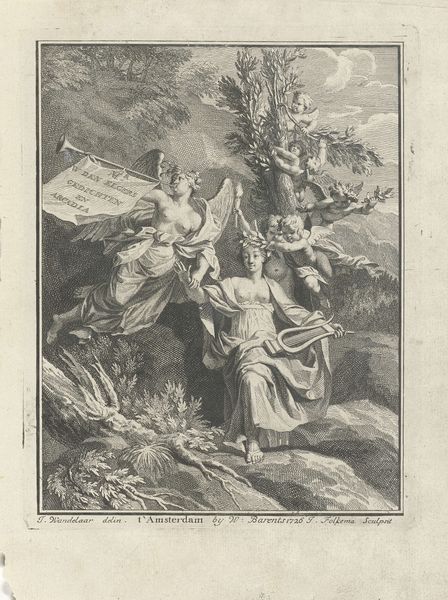
Embleem met man die overweegt welke weg hij in het leven gaat bewandelen 1620 - 1623
0:00
0:00
print, engraving
#
allegory
#
baroque
# print
#
old engraving style
#
landscape
#
figuration
#
line
#
history-painting
#
engraving
#
miniature
Dimensions: height 135 mm, width 92 mm
Copyright: Rijks Museum: Open Domain
Editor: This engraving, titled "Embleem met man die overweegt welke weg hij in het leven gaat bewandelen," roughly translates to "Emblem of a man contemplating which path to take in life." It’s by an anonymous artist and dates back to the early 1620s. The composition is wild! What do you see in this piece? Curator: I see a fascinating example of early modern anxieties visualized through allegory. This image participates in a wider cultural debate about morality, choice, and the individual's relationship to salvation. Think about the rise of humanism and individual agency in the Renaissance; by the 17th century there was great uncertainty concerning human agency with profound anxieties about personal salvation and damnation. This print encapsulates that unease, offering a stark choice between earthly pleasures and divine reward. Notice how the figure's placement in the foreground isolates him, emphasizing the burden of this decision. Editor: It feels incredibly charged. Is that intentional or a product of its time? Curator: I’d argue it's both. The artist is clearly making choices to amplify the drama—the hellscape to the left, the heavenly vision above, the winding paths. However, this kind of visual language was very common during the Baroque period, reflecting the church’s role in public life as well as the development of printing presses used as powerful pedagogical and propaganda tools. The intent was didactic, intended to instruct the public and shape popular attitudes. Consider the sociopolitical conditions of the era. Editor: That makes so much sense! The political conditions helped amplify religious narratives that placed salvation front and centre. It's amazing how one image can unpack so many complex layers of history. Curator: Precisely! And analyzing its public role helps reveal these underlying narratives about institutional and public ethics. Hopefully you'll carry those questions forward!
Comments
No comments
Be the first to comment and join the conversation on the ultimate creative platform.
